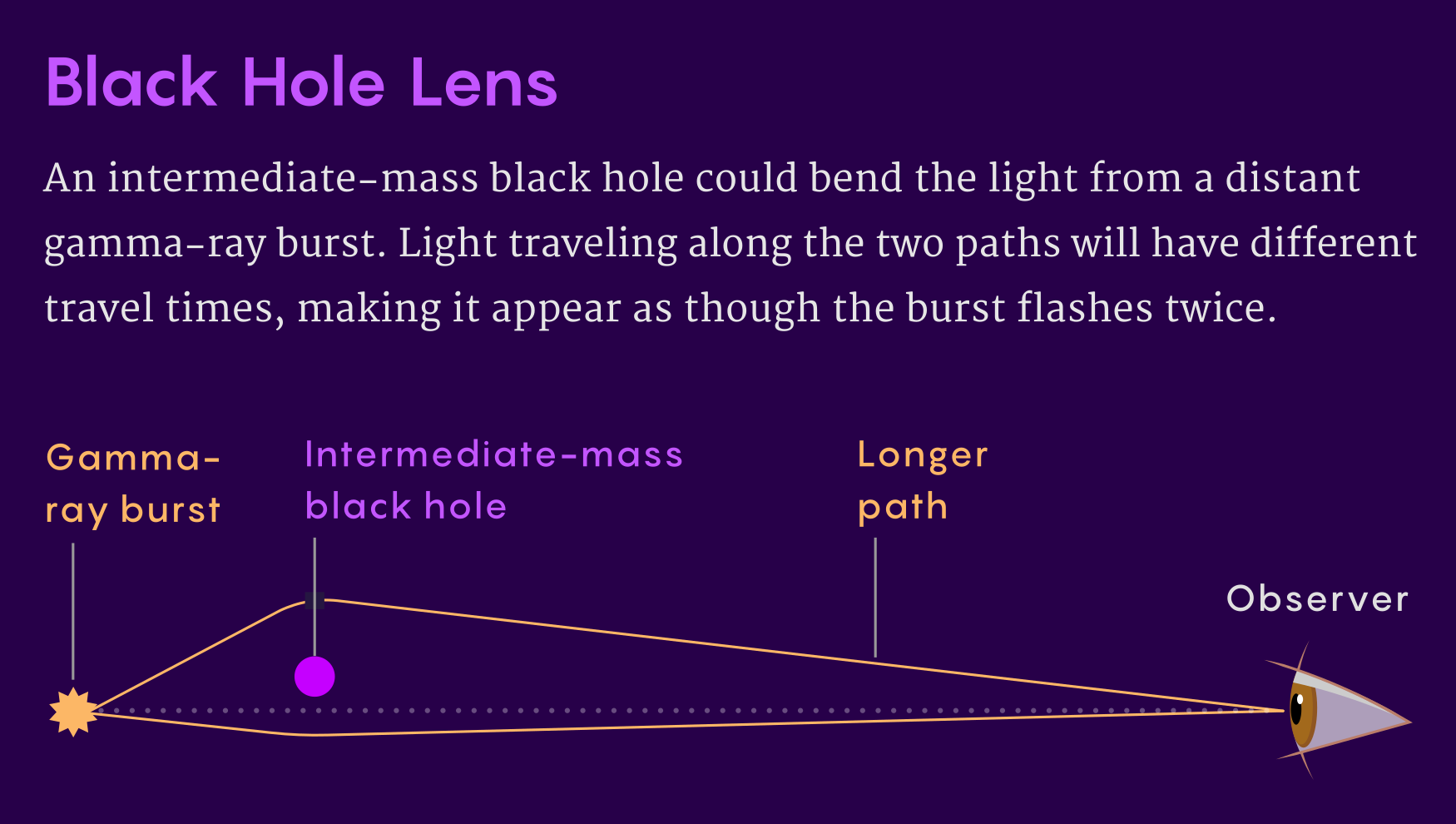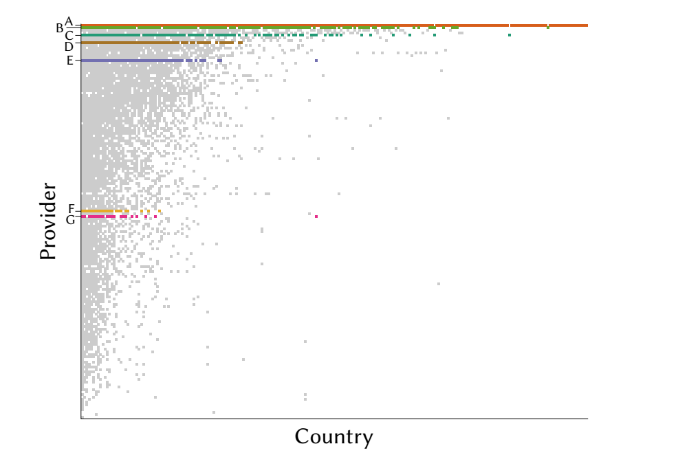Elusive Medium Mass Black Hole Discovered
A medium-mass black hole is the missing link between star-sized black holes and supermassive giants.
At the center of almost every large galaxy is a supermassive black hole. These titans, billions of times the mass of the Sun, influence the evolution of galaxiesin whose heart they are located.
However, astronomers cannot understand how they reached such enormous proportions. It looks like some of them have formed just 600 million years after the Big Bangwhen the universe was only 4% of its present age. From the point of view of how we understand the growth process of black holes, this seems impossible. “There just wouldn’t be enough time to create such a massive black hole so early,” says Lukasz Wyrzykowski, an astronomer at the University of Warsaw. “That is, without something from which they could grow,” he clarifies.
Such “seeds” are believed to be medium-mass black holes – giant black holes, the missing link between stellar mass black holes formed by the death of stars and supermassive black holes. Medium-mass black holes are supposed to weigh between 100 and 100,000 solar masses, and according to scientists, they represent a critical stage in the growth of monsters in the centers of galaxies.
The main problem is that they are difficult to detect. “Black holes emit nothing,” said Daniel Holtz, an astrophysicist at the University of Chicago, “So it’s very hard to find them.”
Astronomers have already identified several potential candidates for the title of “medium-mass black hole”. Last year, using the Hubble Space Telescope, they discovered a black hole of 50,000 solar masses, consuming star; another candidate 20,000 times heavier than the Sun, HLX-1 appears to be busy with the same…
The researchers claim that thanks to the new method, they found a black hole weighing up to 55,000 solar. An article about this discovery was recently published in the journal Nature astronomy, it also presents a search strategy that will help find many more similar black holes in the future.
The study was led by James Painter, PhD student at the University of Melbourne. In 2018, Painter’s supervisor and co-author Rachel Webster asked him to analyze about 2,700 gamma-ray bursts (bright bursts of energy that are believed to be the result of mergers of neutron stars or giant supernovae), data on which were collected by NASA’s Compton Gamma Ray Observatory (CGRO) between 1991 and 2000
He was looking for pairs of almost identical GRBs that followed one after the other with a short break. A double flash may indicate that the gamma-ray burst is being “lensed” by an object between it and us. Such a massive object, bending the light of the burst on its way to Earth, could be a black hole of average mass.
In the entire dataset of 2,700 GRBs, Painter’s automated software isolated only one case. In 1995, the Compton Observatory recorded a burst from an alleged gamma-ray burst that occurred when the universe was about 3 billion years old. Half a second later, an almost identical burst was recorded.
The team concluded that there is a medium-mass black hole between the Earth and the GRB. The gamma ray burst was not located exactly in the center of the black hole, so its light traveled along two different paths, one of which was slightly longer. “The lens affects the path of two photons moving along the opposite ‘edges’ of the black hole, – explains the co-author. Eric Train, an astrophysicist at Monash University. “That’s why we see one flash before another.”

Black hole as a lens: A medium-mass black hole could warp learning from a distant gamma ray burst. Light traveling along two paths will reach the Earth at different times, so it will look like two flashes.
But this explanation did not convince everyone. According to Natalie Webb, an astrophysicist from the Research Institute for Astrophysics and Planetology in France, one of the difficulties is that we do not know how many black holes of average mass there are in the universe. How lucky should we be to have such a hole exactly between our planet and the GRB? “According to the calculations of some people, there are a huge number of such holes, 1000 per galaxy, in which case something like this could happen,” says Webb. “If they met less often, then yes, it would be less likely.”
Another problem is that we do not know enough about the GRBs themselves – perhaps the flares appear twice naturally, and not as a result of lensing. “They are all so different and weird,” says Holtz. “The main question here is: could it just be a double GRB?” Lens could also be caused by globular star cluster (a large cluster of old stars with a symmetrical spherical shape), but the team thinks this is unlikely, since globular clusters are 100 times less common than intermediate-mass black holes. “The chances of the cluster being in the right place are slim,” says Train.
These particular outbreaks were discovered more than two decades ago, so we will most likely never know for sure. A more exciting prospect is that the described method – looking for medium-mass black holes that act as lenses – will help us make even more discoveries in the future.
“Revealing populations of intermediate-mass black holes using lensing is fun,” says Holtz. Vyrzhikovsky used data from the GAIA telescope to search for medium-mass black holes that bend the light of stars, not gamma-ray bursts, but he has nothing to brag about yet.
Medium-mass black holes could not only explain the growth of supermassive black holes, but also provide evidence for another mystery of the cosmos – dark matter… Dark matter, which scientists believe makes up 85% of the mass of the universe, may have itself been the most important ingredient in fueling the growth of intermediate-mass black holes. “It is very difficult to create such a black hole from ordinary matter,” says Vyrzhikovsky. – This requires the merging of many stars, and in [ранней] The universe didn’t have enough time for that. “
The new telescopes are expected to help in the hunt for elusive medium-mass black holes. According to Painter, the potential of the Compton Observatory data from a decade ago has already been exhausted, but about 7,000 more gamma-ray bursts from other telescopes can be analyzed. In addition, NASA’s Fermi Gamma-ray Space Telescope continues to detect them today. “It’s time to analyze other datasets looking for new lensing cases,” Painter said.
Many hope that the mystery of the mysterious intermediate mass black holes, and with it the growth of supermassive black holes, will soon be solved, no matter what method. “Everyone believes they are,” Train says. – They definitely have to exist somewhere in the Universe. You just need to find exactly where. ”




